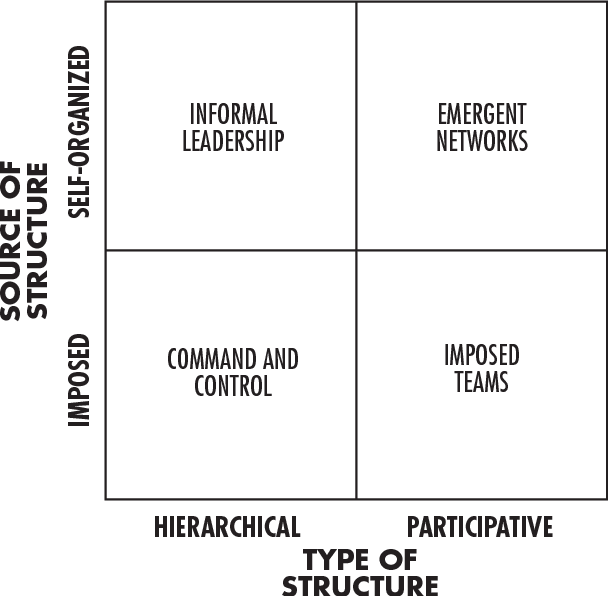I recently read a definition of organizational culture that caught my eye and got me to thinking in Nobl’s What Does Organizational Culture Mean for a Remote Workplace?. The anonymous authors make the case for company culture as ‘the last sustainable advantage’, and touch on how remote work might change the dynamics in the workplace in negative ways. In this piece, though, I want to just look at their definition of organizational culture as a starting point for a distinction I believe we should be making when talking about work culture.
Their definition:
We define culture as an emergent property of interpersonal interaction, mediated by the organization’s environment, purpose, strategies, structures, and systems. Let’s break that down:
Culture is an emergent property... Culture is like the weather in that it’s an always-changing product of many interacting systems and actors. Just as you can’t snap your fingers and get a warm day in the middle of an Alaskan winter, you can’t instantly control or reproduce organizational cultures. Cultures are organic. They emerge. But, unlike the weather (yet), they can also be formed intentionally. People can and should be thoughtful, purposeful, and responsible around the behaviors, values, attitudes, beliefs, and assumptions they share. This means people can be empowered to design the culture they want, but they have to view culture holistically.
[…]
...of interpersonal interaction… Culture is foremost produced by how your people interact with one another. Of course, how they interact is influenced by everything from societal norms to corporate policies (implicit or explicit).
...mediated by the organization’s environment, purpose, strategies, structures, and systems. Organizations have four domains that you can impact:
Purpose: what draws folks to your organization
Strategies: what trade-offs they make in decision making
Structures: how they are organized into teams
Systems: the internal norms, processes, and tools they use to get their work done
Unlike the folks at Nobl, I am less interested in ‘designing culture’, per se, than digging in a bit deeper on the nature of different sorts of cultures. In fact, I am somewhat skeptical of ‘designing culture’, since culture is, as they write, an emergent phenomenon, and so it is somewhat unpredictable, at least in the context of truly self-organized organizations.
E. Jeffrey Goldstein, in Emergence as a Construct: History and Issues, reviewed the history of the concept of emergence, starting with Aristotle and continuing on to today’s complexity theory. He offers this as a working definition:
The arising of novel and coherent structures, patterns, and properties during the process of self-organization in complex systems.
With regards to organizations demonstrating emergence, Goldstein suggests we will see
radical novelty — new capabilities and behaviors can appear that were not formerly observed
coherence — organizations maintain themselves over time
wholeness — an organization can be viewed as a system greater than the sum of its parts, but still as a whole
ostentative — organizations ‘show’ themselves: they can be viewed and the interplay between the parts can be viewed, and changes in the organization over time is best viewed as a whole.
Most pertinently, Goldstein turns to make a clear distinction between the types and sources of structure in organizations:
First, we are only looking at organizational cultures where the source of structure is self-organized. Goldstein was interested in emergent leadership (synonymous with informal leadership in the chart), focused on ‘how leaders emerge in leaderless groups’, and citing complexity theorist Stuart Kauffman, he wonders if there is ‘a kind of “order for free”’ in such situations. Note, however, that hierarchical structure — perhaps transitory — is one aspect of such emergence.
It is the upper right quadrant that is perhaps of greatest interest to those interested in the intersection of self-organization and participative principles of organization, or as Goldstein puts it, ‘authentic instances of emergence in organizations as complex systems’, and offers up a great example:
An example of an emergent network that also includes emergent leadership can be found in Murnigan and Conlon’s (1991) research into the organizational success factors of string quartets in the UK. The organization of successful quartets was observed to be a function, not of the imposition of an official management structure, but instead of allowing for the emergence of effective strategies, work processes, and leadership roles. For instance, successful quartets exhibited the emergence of conflict resolution as they rehearsed, whereas unsuccessful quartets tried to resolve these conflicts through imposed rules and roles.
It’s no knock on Nobl to split hairs about their definition of work culture. Certainly, there is a place in the world for consulting firms to help people understand the dynamics of complex systems, emergent leadership, and emergent networks. For example, the unsuccessful quartets in Goldstein’s example might have benefited from learning about the patterns of behavior in successful quartets, which a firm like Nobl might have drawn the quartets’ attention to.
The single biggest takeaway, however, is a characteristic of emergent organizations that neither Goldstein nor Nobl touch upon: minimum viable management. As I wrote last fall,
We need a new work culture in which management is considered at most a necessary evil, and something we should have as little of as possible. We have learned something about alternatives to conventional management, and we should continue to experiment and observe new approaches. But we know some things to be true, such as lessons we have learned about the danger inherent in power imbalances, the pervasiveness of our cognitive biases, and the value and challenges of diversity.
Minimum viable management is a pillar of minimum viable work:
Minimum viable work means operating with the greatest degree of individual autonomy, the lowest degree of managerial overhead, and the highest levels of cooperation without coercion.
I suggest that we will find that emergent organizations will share these characteristics as the outgrowth of self-organization and participative principles, and a less-is-more approach to leadership, even when informal, transitory, and emergent.




Great read, thank you